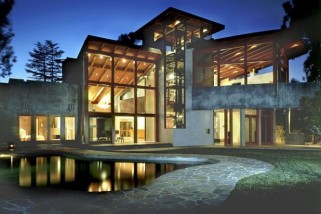Due in large part to the ongoing effects of climate change, consumers are now becoming more aware of environmentally friendly concepts than ever before. In fact, recent research has shown that nearly 50 per cent now feel that sustainability is key in regard to how products are manufactured and shipped to consumers. This very same observation is just as relevant to homes and businesses. Let’s, therefore, take a look at the five core principles associated with sustainable interior design.
All About Energy Efficiency
Smart home energy systems are now taking centre stage due to their availability as well as their cost-effective nature. When we recall that greenhouse gas emissions are on the rise, it only stands to reason that novel solutions should be made available.
Not only do these come in the form of modern materials, but the design approaches themselves have begun to incorporate several unique elements including:
- High-quality insulation (both cavity wall and loft)
- Drapes and curtains provide a thermal barrier from exterior temperatures.
- Double- and triple-glazed windows
Even carpets can reduce heat loss by as much as ten per cent. We can therefore begin to see why homes of the future will consume much less electricity when compared to their traditional (and often outdated) counterparts.
Low Carbon Footprint
Most of us are already aware of smart home lighting systems, wireless controls, and the Internet of Things (IoT). Sometimes referred to as “green gadgets”, the primary intention is to reduce the amount of energy needed to provide a comfortable environment. Examples include LED lighting fixtures and ground-source heat pumps. Other innovative approaches such as using colours that maximise the amount of ambient light and employing mirrors in strategic locations will likewise limit energy consumption. However, this is only the beginning.
Renewable sources of energy such as highly efficient solar panels can provide a viable means to generate electricity while dramatically reducing the carbon footprint of a home, an office, or even an entire building. Wind and geothermal power are likewise enjoying a greater presence in many regions of the world.
Another way to mitigate the environmental impact of a structure is through the use of sustainable building materials such as bamboo and hemp. There are also certain types of wood that have become known for their sustainable nature. These are often provided with an FSC (Forest Stewardship Council) label within the Australian marketplace.
Limiting Waste Production
One of the challenges associated with interior design involves limiting the amount of waste that is produced during a project. In this respect, two primary strategies are commonly employed:
- Re-designing and repurposing old materials (such as through the use of reclaimed wood when constructing a fireplace mantle).
- Utilising synthetic materials that were created partially or fully from recycled waste products.
To put these observations into perspective, it has been shown that collecting virgin lumber may require up to 13 times more energy when compared to reclaimed materials. Recycled substances are likewise excellent choices for two reasons. Not only can they help to protect the environment, but many now represent extremely cost-effective alternatives; important for those who are governed by a tight budget.
Long-Term and Flexible Solutions
It seems as if we have become accustomed to living within a disposable society. Unfortunately, this is one of the very same habits which cause the environment to suffer. Interior designers must now look towards the distant horizon by including longevity within their core principles.
As opposed to being forced to upgrade a home or business, contemporary methods seek to adopt long-term techniques which will stand the test of time. Some of the ways in which this may be accomplished include:
- Opting for classical designs over short-term trends.
- Implement quality materials that are designed to last.
- Stressing the functional simplicity of a design.
Of course, customers will still require changes on occasion. Smart solutions can once again come into play. Adjustable furniture designs, modular flooring, materials that are easy to clean, and low-maintenance appliances are some viable solutions that are beginning to become commonplace. In the event that an interior needs to be redesigned, the overall environmental impact will be kept to a minimum.
Healthy Indoor Environments
Personal health is also crucial regarding indoor environments. Issues such as air quality, ventilation, and heating have all taken centre stage due to the fact that the long-term risks are very real. So, what methods have interior designers begun to utilise?
Some techniques have existed for decades. From timely plumbing maintenance and asbestos abatement to installing new HVAC filters and replacing old carpets, many approaches represent nothing more than a bit of common sense. However, a handful of other sustainable policies can provide even more health benefits.
One involves the use of materials associated with low VOC (volatile organic compound) levels, as these chemicals are dangerous, and some are carcinogenic. Sustainable upholstery cleaning services, the ability to maximise the amount of natural light, and the use of oxygen-producing plants are all strategies that can produce viable results.
Changes Today for a Sustainable Tomorrow
Interior designers have always possessed the capability to think outside of the proverbial box. These latest techniques represent amazing examples of how the entire industry is evolving in order to ensure a bright future.
- Top-Five Farm Gate Signs Ideas - August 17, 2022
- 7 Benefits of Engineered Wood Flooring - January 27, 2022
- How Smart Homes are Impacting the Interior Design Industry - January 10, 2022











